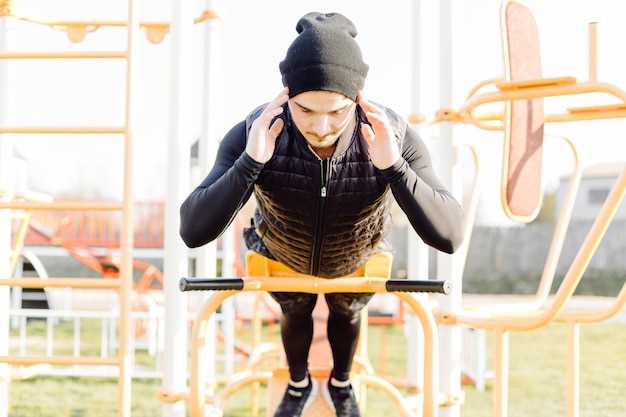
Embark on a journey to conquer the sensational world of pirouettes! Delve into the realm of graceful spins and controlled rotations, where every dancer’s dream is to effortlessly float like a feather while executing these mesmerizing ballet movements. Aspire to attain an impeccable pirouette technique that captivates both audience and fellow dancers alike. In this comprehensive guide, we unveil the secrets and strategies for achieving flawlessly executed pirouettes with poise, elegance, and absolute control.
Discover the key to mastering the art of pirouettes lies not only in physical strength and flexibility, but also in mental focus and unwavering determination. With the right mindset and unwavering commitment, you can transcend the realm of technicality and transform your pirouettes into a masterpiece of artistry and expression. From proper body alignment to the finer intricacies of spotting, this article will explore various techniques and drills to refine your pirouettes, empower your turns, and unlock the door to a world of mind-blowing spins that magnetize the eyes of all beholders.
Prepare to embark on a transformative journey to develop your pirouette skills into awe-inspiring whirls that leave a lasting impression. Unleash your inner grace and fluidity as you go beyond the mere execution of spins, transcending into a realm where every movement reflects a story meant to captivate hearts and souls. Equip yourself with invaluable knowledge on body positioning, strength conditioning, and balance whilst delving into the art of choreographic interpretation. From unique warm-up exercises to advanced variations, our aim is to equip you with an arsenal of techniques that will serve as the building blocks for pirouette perfection.
Mastering the Basics: Building a Strong Foundation
In the realm of perfecting pirouettes and achieving graceful and controlled spins, it is essential to emphasize the importance of mastering the foundational elements. Building a solid foundation is crucial for dancers looking to enhance their technique and take their pirouettes to the next level. By focusing on honing fundamental skills and understanding key principles, dancers can establish a strong base from which to develop their ability to execute flawless pirouettes.
Understanding Proper Alignment
A crucial aspect of building a strong foundation for pirouettes is developing a thorough understanding of proper alignment. Maintaining a balanced and aligned posture is essential for achieving stability and control during spins. Dancers should strive to align their shoulders over their hips, engage their core muscles, and elongate their neck and spine. By consistently practicing correct alignment in basic exercises and movements, dancers can pave the way for successful pirouettes.
Mastering Balance and Spotting Techniques
Achieving and maintaining balance is a fundamental skill that forms the basis of perfecting pirouettes. Dancers must train their bodies to find equilibrium by practicing exercises that challenge and enhance their stability. Additionally, mastering the art of spotting is essential for executing multiple revolutions with grace and control. By focusing their gaze on a fixed point and quickly reorienting their vision, dancers can minimize dizziness and maintain balance throughout the spin.
In conclusion, the path to perfecting pirouettes with grace and control begins with mastering the basics and building a strong foundation. By understanding and consistently practicing proper alignment, balance, and spotting techniques, dancers can establish the groundwork needed to execute flawless pirouettes. Through dedication and perseverance, dancers can elevate their technique and add the magical element of grace to their spins.
Finding Your Spot: Focusing on a Fixed Point
In the realm of perfecting pirouettes, one crucial element that can greatly improve your spins is finding your spot and focusing on a fixed point. This technique involves selecting a specific spot in your line of vision and keeping your gaze fixed on it throughout the entire turn. By doing so, you can enhance your balance, control, and overall grace in executing pirouettes.
The Importance of a Fixed Point
Having a fixed point to focus on during pirouettes serves multiple purposes. First and foremost, it helps you maintain your balance by providing a stable reference point in space. This reference point acts as an anchor for your body, allowing you to maintain your alignment and prevent any unwanted wobbling or drifting during the turn.
Secondly, focusing on a fixed point aids in improving your control over the spin. By directing your visual attention towards a specific spot, you can mentally connect with that point and subconsciously guide your body towards it. This promotes a sense of control and enables you to execute the pirouette with precision and consistency.
Finding the Perfect Spot
When choosing a fixed point for your pirouettes, it’s important to select something that is easily visible and distinguishable. Ideally, it should be located at eye level and positioned directly in front of you. This could be a spot on the wall, a specific mark on the floor, or even a person standing in front of you.
Experiment with different fixed points to determine which one works best for you. Some dancers find it helpful to focus on a specific detail, such as a doorknob or a picture on the wall, while others prefer to use a person as their point of focus. Ultimately, the goal is to find a spot that allows you to maintain a strong visual connection and engage your concentration fully.
Remember: The key to successfully finding your spot is actively engaging your visual sense and maintaining a steady gaze throughout the entire pirouette. Avoid letting your eyes wander or losing focus, as this can disrupt your balance and compromise the overall quality of your turn.
In conclusion, incorporating the technique of finding your spot and focusing on a fixed point can greatly enhance your pirouettes. By establishing a visual anchor, you can improve your balance, control, and ultimately spin with grace and control.
Maintaining Proper Alignment: Core Strength and Posture
Ensuring correct alignment is essential to executing pirouettes with grace and control. In this section, we will explore the significance of core strength and posture in achieving and maintaining proper alignment throughout the pirouette technique.
The core muscles play a crucial role in stabilizing the body during the pirouette. These muscles, including the abdominals, obliques, and back muscles, provide the foundation for maintaining balance and control. By strengthening the core, dancers can better support their bodies and maintain a solid axis, allowing for smoother and more controlled turns.
Additionally, proper posture is vital in achieving and maintaining alignment throughout the pirouette. Good posture involves aligning the spine, shoulders, and hips in a neutral position. It helps to activate the correct muscles and distribute the dancer’s weight evenly, ultimately leading to more controlled and balanced turns. Engaging the core muscles and maintaining a lengthened spine are key components of maintaining proper posture during pirouettes.
To improve core strength and posture, dancers can incorporate specific exercises into their training regimen. Exercises such as planks, crunches, and back extensions target the core muscles and help build strength, stability, and control. Additionally, practicing exercises that promote proper alignment, such as standing with correct posture against a wall, can further enhance a dancer’s ability to maintain alignment during pirouettes.
By prioritizing core strength and posture, dancers can greatly improve their ability to execute precise and controlled pirouettes. With these foundations in place, they can spin with elegance, confidence, and a heightened level of artistry.
Understanding Turnout: Unlocking the Power of Your Hips
Exploring the concept of turnout is essential for any dancer striving for mastery in pirouettes. Proper technique and alignment of the hips are crucial to achieving a graceful and controlled spin. In this section, we will delve into the importance of understanding and utilizing turnout to unlock the full potential of your hips.
Turnout refers to the rotation of the legs from the hips outward, allowing the feet to face away from each other. It is a fundamental element in ballet technique and plays a key role in pirouettes. By maximizing your turnout, you can create a solid foundation for your spins, enhancing balance and stability.
The power of turnout lies in the hips. The hip muscles, including the deep rotators, external rotators, and hip flexors, work together to generate and maintain turnout. These muscles need to be strong and flexible to achieve optimal range of motion in the hips.
One way to enhance your turnout is through targeted exercises that specifically engage and strengthen the hip muscles. These exercises may include clamshells, hip rotations, and deep squats. Regular practice of these exercises can help increase your overall turnout, enabling you to execute pirouettes with more precision and control.
| Benefits of Proper Turnout: |
|---|
| Improved alignment and posture |
| Enhanced stability and balance |
| Increased range of motion in the hips |
| Greater control and control in pirouettes |
| Reduced risk of injury |
Understanding and developing your turnout is a continual process. It requires patience and consistent effort to gradually increase your hip flexibility and strength. Remember to always engage your core, maintain proper alignment, and listen to your body’s limitations. With dedicated practice and a deep understanding of your turnout, you can unlock the power of your hips and elevate your pirouettes to new heights.
The Importance of Spotting: Maintaining Your Balance and Control
Developing proper spotting technique is crucial for achieving successful pirouettes. Spotting refers to the practice of focusing on a fixed point while turning, which helps you maintain your balance and control throughout the movement. By keeping your eyes fixed on a spot and using your head to lead the turn, spotting allows you to remain stable and avoid dizziness during multiple rotations.
Spotting plays a vital role in executing pirouettes with grace and precision. It enables you to maintain alignment and orientation, ensuring that you stay in control and can easily transition into subsequent movements. Without effective spotting, you may lose your balance, compromise your form, and struggle to land properly.
Consistent and rhythmic spotting is necessary to keep your body centered while turning. By focusing on a specific location or object and quickly redirecting your gaze to that point after each rotation, you create a visual anchor that aids in stabilizing your movement. This technique also helps prevent dizziness by providing a steady point of reference as you spin.
- One effective way to practice spotting is by using a fixed object, such as a spot on the wall or a spotter’s hand, as your focal point. As you turn, maintain a steady gaze on this point, and quickly return your focus to it each time you complete a rotation.
- Incorporating exercises that promote coordination and quick head movements can also improve your spotting abilities. These exercises may include practicing quarter turns and gradually increasing the number of rotations while maintaining accurate spotting.
- It is important to remember that spotting should not be limited to just the head movement. Your entire body should be involved in the process. Aim to keep your head aligned with your spine, and engage your core muscles to maintain stability and control.
In conclusion, mastering the technique of spotting is essential for achieving balance and control in pirouettes. By developing this skill, you can enhance your performance, execute clean turns, and maintain stability throughout each rotation. Practice regularly and incorporate spotting exercises into your training routine to improve your overall pirouette technique.
Progressing with Variations: Adding Difficulty and Style to Your Pirouettes
Enhancing your pirouettes involves more than just perfecting the basic technique. To truly stand out and captivate your audience, it’s essential to add variations that showcase your skill, creativity, and unique style. This section will explore how you can progress your pirouettes by incorporating different variations that add difficulty and elegance to your spins.
Exploring Different Positions
One way to add difficulty and style to your pirouettes is by experimenting with different positions of your body. Instead of sticking to the traditional fourth, fifth, or attitude positions, venture into uncharted territory by incorporating positions such as passé, arabesque, or even a daring split position. These unique and unconventional positions will not only challenge your balance and control but also add an unexpected element of surprise to your pirouettes.
Playing with Tempo and Rhythm
Varying the tempo and rhythm of your pirouettes can dramatically transform the overall feel and impact of your performance. Instead of always executing your turns at a steady and consistent tempo, experiment with speeding up or slowing down the rotation. You can also incorporate pauses or quick accelerations within your spins to create moments of suspense or highlight specific beats or musical accents. By playing with tempo and rhythm, you can add a dynamic and mesmerizing quality to your pirouettes.
| Tip | Example |
|---|---|
| Try experimenting with different arm positions: | Extend one arm in a graceful arc and the other arm raised above your head, creating a beautiful line. |
| Incorporate turns on relevé: | Challenge yourself by performing multiple pirouettes while balancing on relevé, increasing the difficulty level. |
| Utilize directional changes: | Transition seamlessly from a standard pirouette to a traveling turn, showcasing your versatility and control. |
Remember, while it’s important to challenge yourself and add complexity to your pirouettes, always prioritize safety and proper technique. Progressing with variations should enhance your dance, not compromise your alignment or put you at risk of injury. With practice, dedication, and a touch of creativity, you can master the art of pirouette variations and leave your audience in awe.


